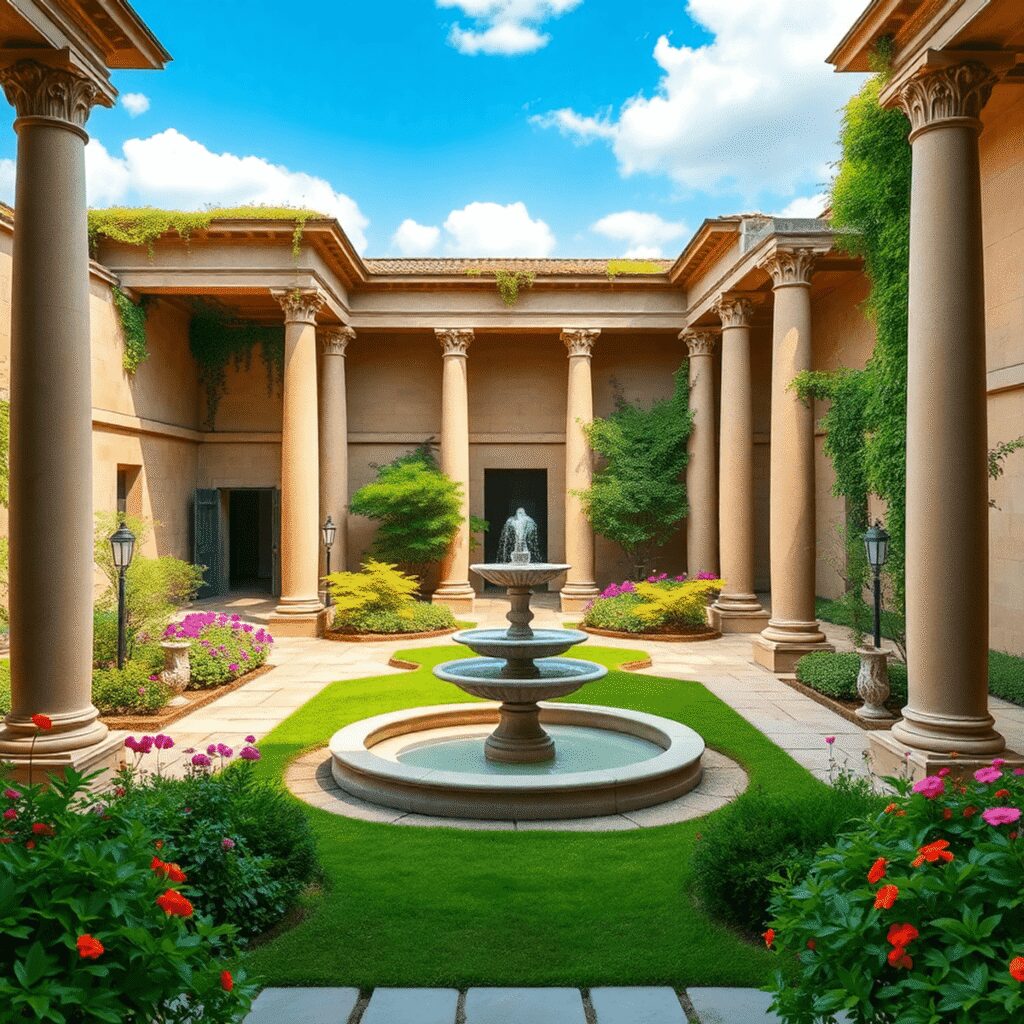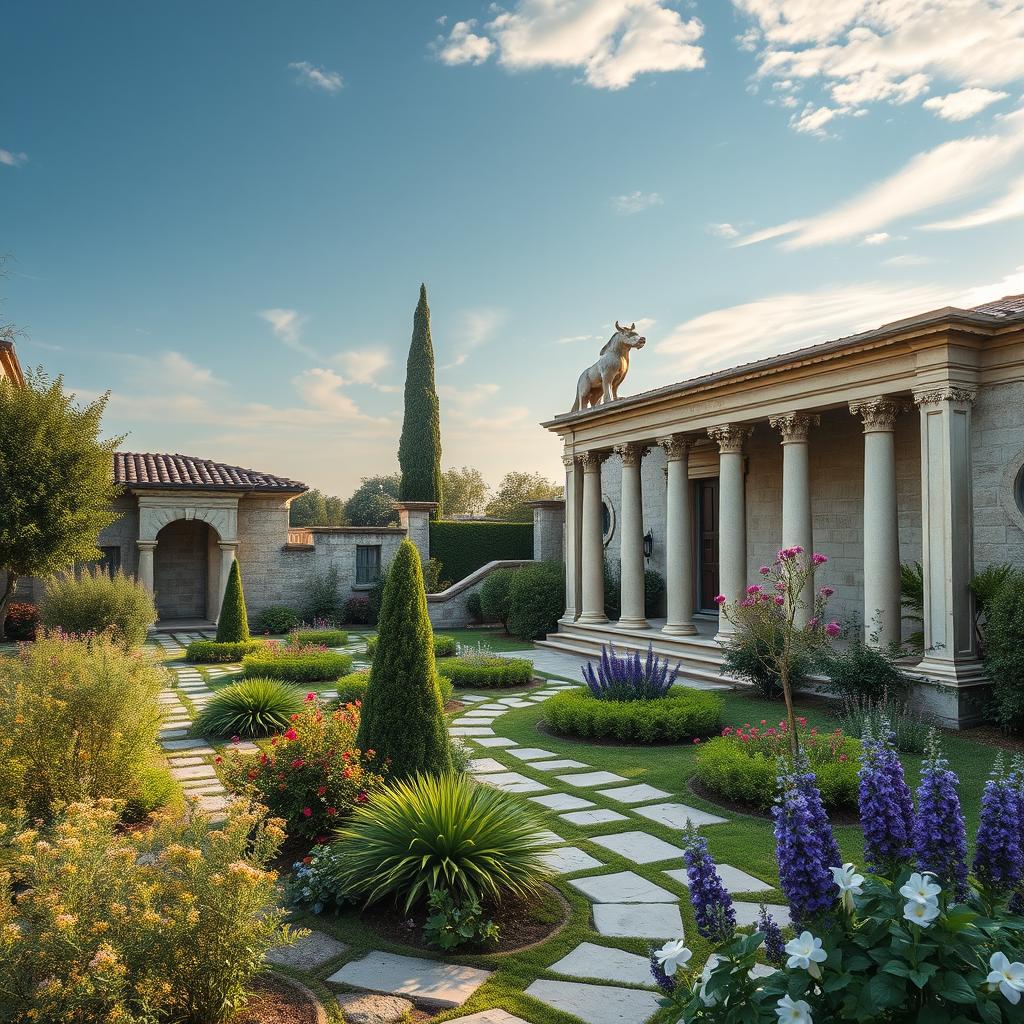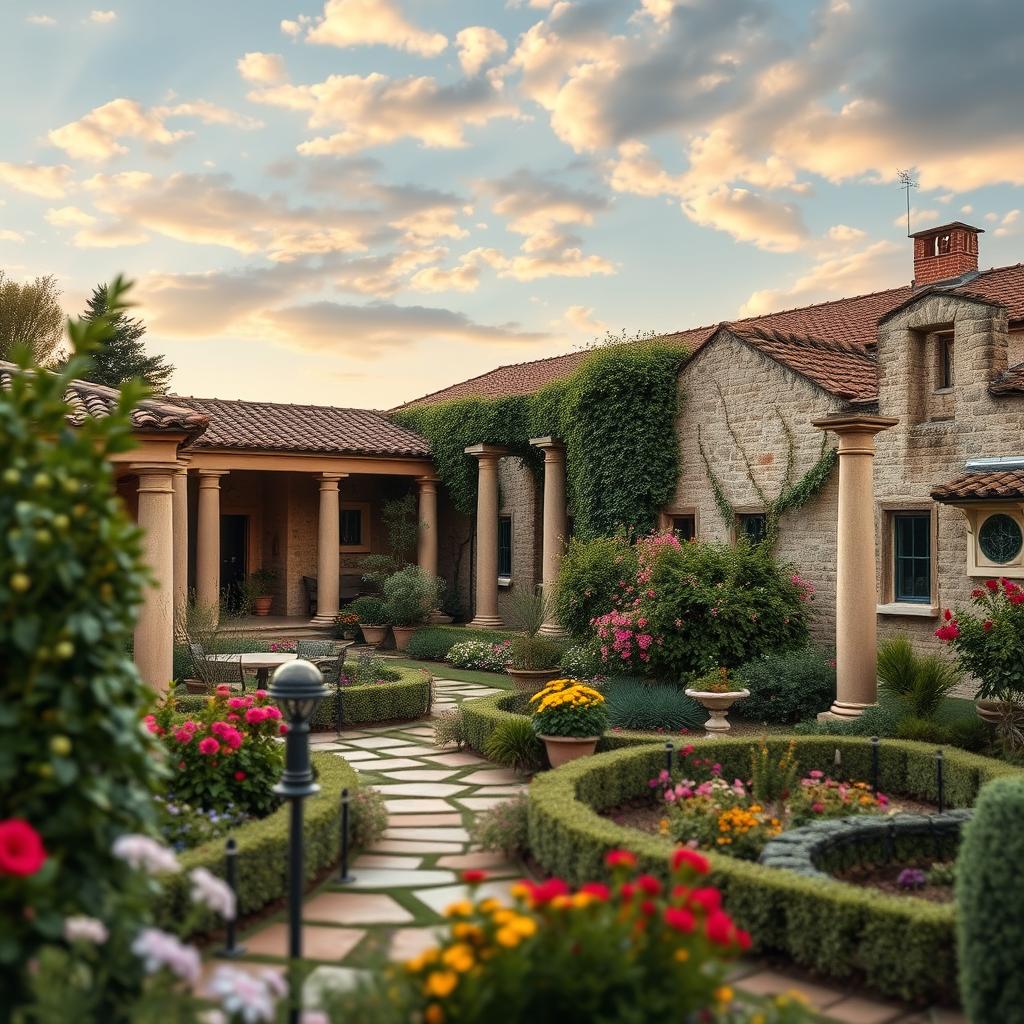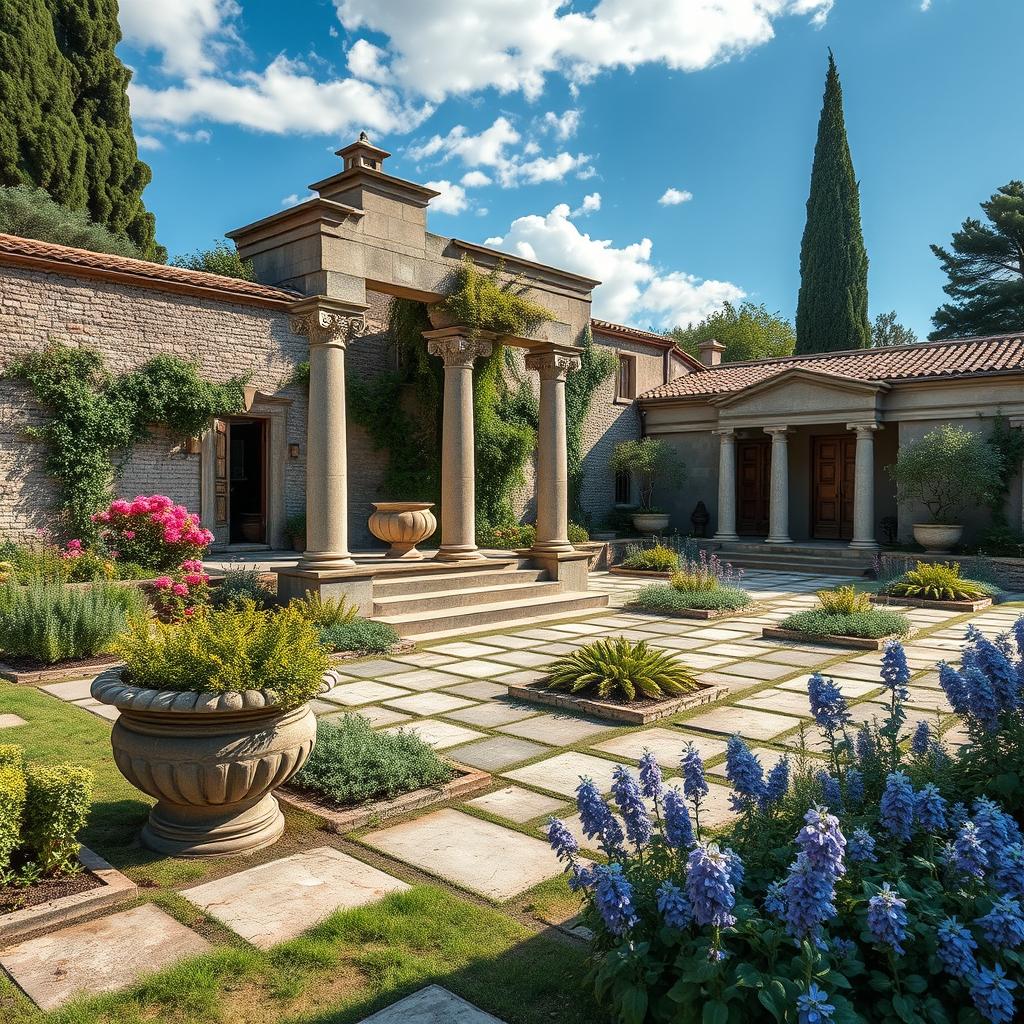The exploration of Roman gardens and landscaping techniques rediscovered for modern spaces reveals a fascinating chapter of horticultural history. Flourishing between 150 BC and AD 350, Roman gardens combined beauty, utility, and spirituality in ways that still resonate today. These gardens were more than decorative spaces; they served as places for relaxation, health, exercise, religious ceremonies, and food production.
Ancient cultures such as Egyptian, Persian, Greek, and Mesopotamian civilizations heavily influenced Roman gardening styles. The Romans adopted water features from Persian gardens, plant varieties from Egypt, and architectural elements from Greece. This cultural blend allowed them to develop distinctive garden designs characterized by enclosed courtyards, fertile soil cultivation, and integrated outdoor living areas.
Rediscovering Roman gardening techniques provides practical insights for modern spaces. You gain access to sustainable practices like seasonal soil preparation and multifunctional garden layouts that combine aesthetics with environmental benefits. These ancient methods offer adaptable solutions for urban homes and rural properties alike. Understanding Roman approaches can inspire innovative landscaping that respects tradition while meeting contemporary needs.
However, the influence of Roman culture extends beyond just gardening. For instance, the Twelve Tables significantly shaped Roman legal systems in the 5th century BCE. Additionally, historical figures like Scipio Africanus, known for his crucial role in the Second Punic War, have left an indelible mark on history.
Moreover, the legal status of women in ancient Rome was complex and intertwined with their relationships with men, as explored in this article about the rights and restrictions of Roman women. Furthermore, the philosophical school of Stoicism which emerged in Greece around 300 BCE also found its way into Roman culture, shaping thoughts and actions throughout the empire. This rise of Stoicism is another testament to how deeply intertwined different aspects of life were during those times.
In addition to academic pursuits related to these historical aspects, there are modern interpretations and immersive experiences available through platforms like Second Life where one can engage in role-playing games set in a virtual world inspired by ancient Rome.

Historical Influences on Roman Gardens
Roman gardens were influenced by various ancient gardening traditions, including those of Egypt, Persia, Greece, and Mesopotamia. Each culture contributed its own practices and design principles, which the Romans skillfully adapted to fit their own environments and social customs.
Egyptian Influence
Egyptian gardening had a significant impact on the Romans, particularly in terms of water management and irrigation techniques. The use of canals and pools to sustain lush greenery in arid climates can be seen in Roman water features that were designed not only for beauty but also for practical irrigation purposes.
Persian Influence
Persian gardening introduced the concept of the chahar bagh—a quadrilateral garden divided by walkways or water channels, symbolizing order and paradise. Romans embraced this idea of geometric organization and created enclosed garden spaces with symmetrical layouts that balanced aesthetics and function.
Greek Influence
Greek gardening taught the Romans the importance of integrating gardens into daily life as places for relaxation, philosophical discussion, and exercise. The Greek emphasis on terraces and natural landscapes influenced Roman peristyles—courtyards surrounded by columns—offering shaded retreats within homes.
Mesopotamian Influence
Mesopotamian gardening provided early examples of ornamental planting and fruit cultivation. The Romans expanded upon these practices by growing diverse plant varieties such as olives, herbs, and flowers. Additionally, the Mesopotamian use of raised beds and soil enrichment techniques informed Roman methods of preparing soil for cultivation.
Unique Roman Innovations
From this blend of influences, unique innovations emerged in Roman gardens:
- Multipurpose garden spaces that combined leisure activities, food production, and religious functions
- Architectural features like patios and pergolas that framed views
- Advanced horticultural tools that enhanced cultivation efficiency

Gardens as Integral Spaces in Ancient Rome
However, the significance of these gardens went beyond their appearance or usefulness. They played a vital role in daily life in Ancient Rome, serving as spaces for leisure amidst the bustling city life filled with spectacles like gladiators or chariot races.
This fusion created gardens that were not only beautiful but also practical extensions of both Roman domestic and public life. They reflected the broader societal norms and values during the rise and fall of the Roman Empire.
As we explore this topic further, it becomes evident that studying these gardens provides a unique perspective into understanding Ancient Rome’s journey through time. It reveals insights about its culture, governance, and societal structure.
Key Features and Design Elements of Roman Gardens
Roman gardens reveal a thoughtful balance between functionality and aesthetics, reflecting their role as spaces for leisure, sustenance, and social interaction. Several core design elements define these gardens:
- Enclosed Spaces: Roman gardens were often enclosed by walls or hedges to create microclimates that protected plants from harsh winds and helped retain warmth. These walls also provided privacy and framed views within the garden, turning the space into a secluded retreat.
- Fertile Soil Cultivation: Soil management was crucial. Romans prepared soil carefully to maintain fertility, allowing for a wide variety of plants to thrive—from fruit trees like olives and chestnuts to aromatic herbs and vibrant flowers. The emphasis on rich soil contributed to productive vegetable patches alongside ornamental beds.
- Water Features: Pools, fountains, fishponds, and channels were common in Roman gardens. Water served both practical and decorative purposes—cooling the air, irrigating plants, and creating soothing sounds that enhanced the garden’s atmosphere. Engineering feats like aqueducts supplied fresh water to these features even in urban settings.
- Multipurpose Use: Gardens were multifunctional spaces integrating beauty with utility. They hosted relaxation areas, places for exercise or contemplation, spots for religious rituals with altars or shrines, and spaces dedicated to growing food and medicinal plants.
Architectural components elevated these gardens beyond mere planting areas:
- Patios/Terraces: Often adjoining living quarters, patios or terraces acted as outdoor rooms where inhabitants could enjoy meals or social gatherings surrounded by greenery. Raised terraces allowed better views over garden layouts and surrounding landscapes.
- Peristyles: A signature element of Roman domestic architecture, peristyles were colonnaded courtyards open to the sky but enclosed on all sides by columns. These spaces combined architectural grandeur with garden elements such as flower beds and fountains at the center. Peristyles connected indoor rooms with outdoor nature seamlessly.
These features made Roman gardens adaptable to various environments—from compact city houses to sprawling rural villas—demonstrating a versatile approach that combined horticulture with design innovation. The integration of natural elements with built structures set a precedent for garden layouts that continue to influence landscaping today.
The influence of these ancient practices can still be seen in modern gardening techniques which emphasize sustainable practices such as the use of compost for soil fertility.

Roman Gardening Techniques and Tools Used for Plant Varieties
Roman gardens thrived through meticulous seasonal soil preparation, a fundamental technique ensuring fertile grounds year-round. The process involved:
- Autumn tilling to aerate the soil and incorporate organic matter.
- Application of compost and manure to enrich nutrients.
- Spring hoeing for weed control and soil loosening, preparing beds for sowing.
- Strategic timing of seed planting aligned with climate and crop cycles.
These practices optimized soil health, promoting vigorous growth of diverse plants such as fruit trees, herbs, and flowers.
Romans employed a variety of horticultural tools, many resembling modern equivalents, including:
- Hand hoes for breaking up soil and weeding.
- Spades and shovels to dig planting holes or move soil.
- Rakes for leveling beds and clearing debris.
- Pruning knives and shears used for maintaining shrubs and vines.
Tools were often crafted from iron or bronze, designed for durability and precision. Their careful use exemplified the Romans’ commitment to garden care as both a practical task and an art form.
These gardening techniques demonstrate how Roman Gardens and Landscaping Techniques Rediscovered for Modern Spaces can inform sustainable cultivation methods today. By adopting seasonal rhythms in soil preparation and utilizing effective tools, modern gardeners can enhance productivity while respecting ecological cycles.
Additionally, it’s important to recognize the role of plebeians in ancient Rome who were vital to the agricultural practices of the time. They comprised a diverse group of free citizens, significantly influencing the development of political and economic structures through their labor in fields such as gardening.
The significance of Roman engineering also cannot be overlooked. Their innovative techniques laid a foundation for contemporary infrastructure systems which have been beneficial in various sectors including agriculture.
Lastly, it’s fascinating to observe the influence of Roman mythology on modern culture, which reflects how deeply rooted these ancient practices are in our societal norms today.

Personalization, Adaptation, and Sustainability Practices in Roman Gardens
Roman gardens reflected the personality and tastes of their owners through careful customization. Furniture played a significant role in creating comfortable outdoor living spaces. Stone benches, marble tables, and wooden chairs allowed Romans to enjoy leisure activities such as dining, reading, or socializing amidst nature. These pieces were often arranged around patios or under pergolas, blending functionality with aesthetic appeal.
Ornamental details added character and symbolism to the gardens. Statues of gods and mythological figures adorned pathways and niches, while decorative mosaics embellished floors and water basins. Colorful frescoes on garden walls depicted natural scenes or religious motifs, enhancing the sensory experience. Vases filled with seasonal flowers and climbing plants trained on trellises further personalized the environment.
Sustainability was integral to Roman gardening philosophy. Practices included:
- Composting organic waste to enrich the soil naturally.
- Crop rotation within kitchen gardens to maintain soil fertility.
- Water management systems such as rainwater harvesting and irrigation channels to optimize use of limited water resources.
- Selecting plant varieties suited to local climates reduced the need for excessive maintenance.
- Designing multi-use spaces that combined beauty with practical functions like food production and medicinal herb cultivation.
These approaches promoted resilience and environmental harmony—principles still relevant for modern sustainable landscaping today.
Spread and Influence of Roman Gardening Practices Across the Empire and Its Evolution into Modern Landscaping Techniques
Roman gardening techniques and design principles extended far beyond Italy, shaping landscapes across the empire. The Romans introduced their sophisticated garden styles to provinces from Gaul to North Africa, adapting them according to local climates and cultural preferences.
Dissemination of Roman Gardening Practices
- Ornamental gardening in Britain began after the Roman conquest in 43 AD. The introduction of box hedges, bay trees, and cultivated flower beds marked a significant shift in British horticulture. Archaeological evidence reveals Roman-style gardens incorporated peristyles, water features, and symmetrical layouts in villas such as Fishbourne Palace.
- In North Africa, Roman gardens integrated native plants with imported Mediterranean species, blending ornamental and practical uses. Water management technologies like canals and fountains became essential in arid environments.
- Eastern provinces saw influences merge with Persian and Hellenistic traditions, resulting in elaborate garden designs featuring colonnades, terraces, and intricate mosaics.
Impact on Subsequent Garden Designs
Roman garden aesthetics strongly influenced Byzantine gardens with their religious symbolism and architectural elements like cloisters. These Byzantine gardens inspired Islamic garden designers who adopted hydraulic innovations for pools and irrigation systems. Later European medieval gardens preserved some Roman horticultural knowledge through texts but shifted focus towards utilitarian herb gardens within monastic settings.
Renaissance revival of classical ideals brought Roman principles back into prominence. Italian Renaissance gardens imitated Roman symmetry, axial planning, and integration of sculpture. This classical influence spread throughout Europe, informing French formal gardens like Versailles with their geometric patterns, waterworks, and orchestrated vistas.
Integration into Modern Landscaping Techniques
Modern landscaping incorporates several ancient Roman concepts adapted for contemporary needs:
- Multifunctional spaces: Like Roman gardens serving leisure, health, food production, modern designs emphasize versatility—combining outdoor living areas with vegetable plots or pollinator-friendly zones.
- Sustainable water management: Rainwater harvesting systems echo ancient cisterns; decorative fountains double as cooling features.
- Soil stewardship: Seasonal soil preparation from Roman methods informs organic gardening practices today.
- Use of native and adapted plants: Romans selected species suited to local conditions; modern gardeners follow this ecological approach for resilience.
- Architectural integration: Patios, pergolas, terraces inspired by Roman peristyles create harmony between built structures and green spaces.
Rediscovering these time-tested techniques offers practical solutions for creating balanced environments that honor historical heritage while addressing current ecological challenges. The profound impact of Roman culture on various aspects of modern society is evident not just in landscaping but also in our legal systems as seen in the enduring influence of the Corpus Juris Civilis on contemporary law. Furthermore, the role of agriculture during the Roman Republic and Empire was a crucial driver of Rome’s economic growth which still resonates today.
Conclusion
Rediscovering Roman gardening techniques reveals valuable lessons for modern landscaping. These ancient methods emphasize:
- Sustainable practices like soil enrichment and water management
- Multifunctional garden spaces blending beauty, utility, and relaxation
- Integration of nature with architecture, enhancing outdoor living
- Use of native and adapted plants suited to local climates
Roman gardens were designed with purpose and harmony. The principles applied in these gardens parallel the broader art and culture in ancient Rome, which also reflect a deep understanding of aesthetic and functional balance. Incorporating these principles today helps create landscapes that are not only aesthetically pleasing but also environmentally responsible and adaptable to modern needs. Roman Gardens and Landscaping Techniques Rediscovered for Modern Spaces offer a timeless blueprint for gardeners and designers seeking balance between tradition and innovation.

